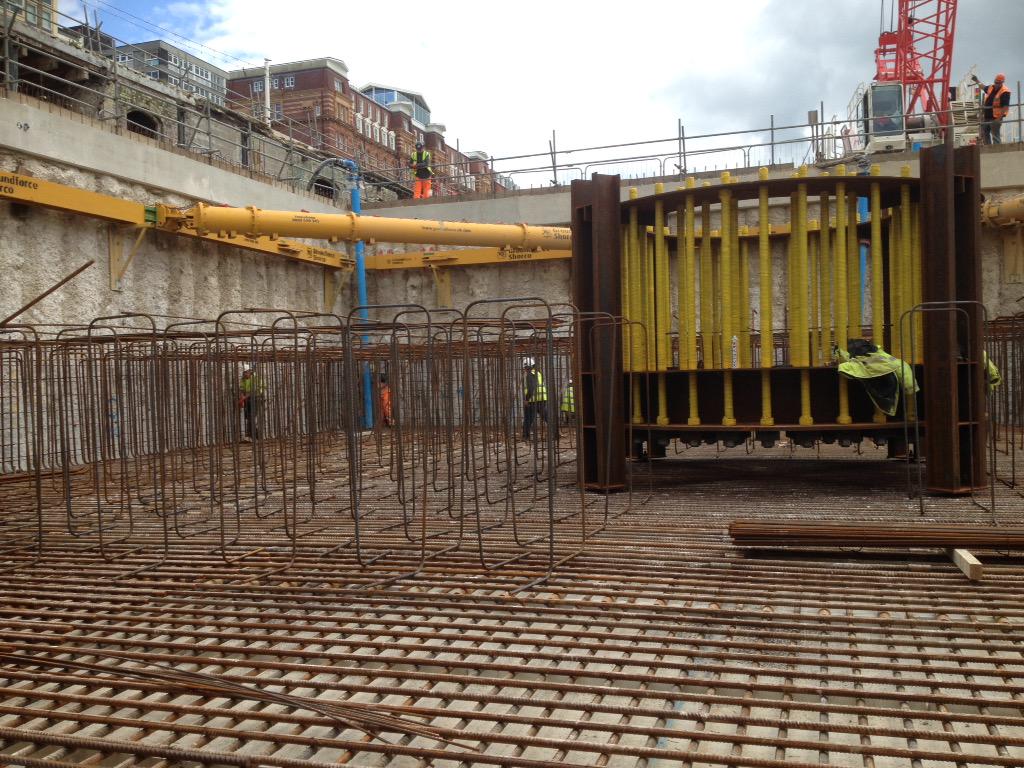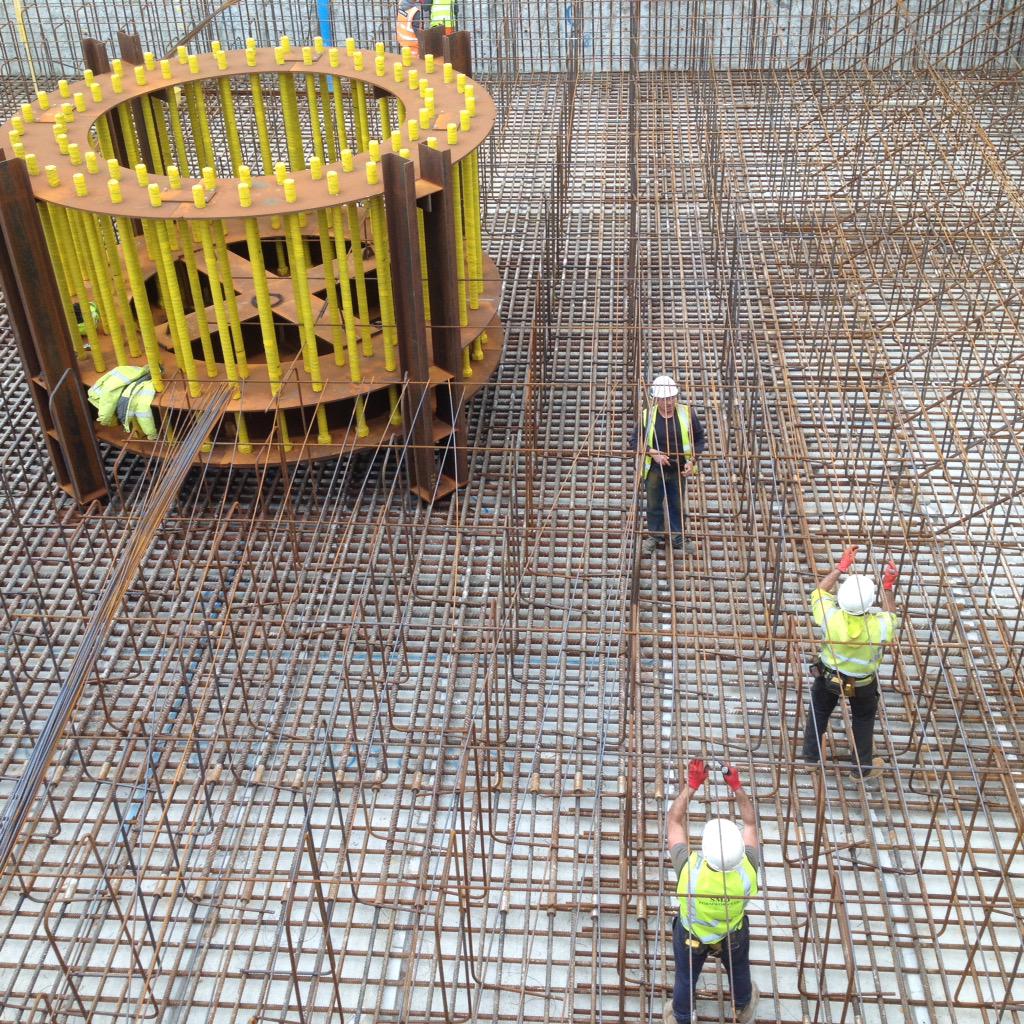Home › Forums › Chat Forum › pouring small concrete piles. any tips
- This topic has 32 replies, 17 voices, and was last updated 9 years ago by jamiesilo.
-
pouring small concrete piles. any tips
-
jamiesiloFree MemberPosted 9 years ago
i’m building a platform for someone to put a light garden cabin onto.
going to pour piles at 1m spacing under load-bearing beams and frame out a floor on them.subsoil is clay but i’m in a very dry area (S. france).
thinking 30cm dia cylindrical piles. how deep should i go?
should i reinforce them?they will probably protrude no more than 10cm above ground
WaderiderFree MemberPosted 9 years agoThe piles will be end rather than side bearing because of your construction method. How deep you should go depends on the ground conditions. You need the base of the pit to be at a level where water table fluctuations etc. wont effect the bearing capability. No need to reinforce as they will be only under compression.
You need a geotechnical engineer by the sounds of it 😉
footflapsFull MemberPosted 9 years agoOne of these should do it
That looks a big light weight, sort of thing you’d use for a rabbit hutch. If this is a shed / man cave you really should use something bigger:
 WaderiderFree MemberPosted 9 years ago
WaderiderFree MemberPosted 9 years agoOr take a belt and braces approach. A raft foundation, say the slab is 300mm thick, with A252 mesh 70 mm from the base. Resting on your piles, driven to Australia.
ioloFree MemberPosted 9 years agoCan’t you use something like stacked 9 inch solid blocks laid flat (if you can get them in France) placed onto concrete pads?
footflapsFull MemberPosted 9 years agoResting on your piles, driven to Australia.
You’ll need some big wing nuts on the end, just in case they pull through.
40mpgFull MemberPosted 9 years agoClay soils produce heave as they absorb water and shrink as they dry. Piled foundations are used to bypass the clay soils to a more stable bearing. This varies massively dependent on building loads and depth to bearing strata – I’ve dropped piles anything from 3m to 60m.
You would be much better constructing a raft which will ‘float’ on the clay strata, avoiding differential movement. For a light structure, 100-150mm hardcore with a 100mm concrete slab with a layer of reinforcing mesh would be plenty. Perhaps add a thickening for any point loads is corner posts.
ssboggyFull MemberPosted 9 years agoOp, how big is thing thing you’re building? Got any details?
Bit bigger than a rabbit hutch 😀
brFree MemberPosted 9 years agotbh if the cabin is wood then you could probably get away with 2×2 pavers double laid at intervals across the whole base.
The wood will move and take up any slack from the ground.
Although I’d level the ground off, lay non-permeable material and then gravel the bits inbetween.
wwaswasFull MemberPosted 9 years agothey’re building somethign near me that’s having a number of these as it’s base;


The bloke barrowing the concrete for that lot’s going to be working hard.
footflapsFull MemberPosted 9 years agoThe bloke barrowing the concrete for that lot’s going to be working hard.
Not as hard as the skivvie mixing it in the wheelbarrow.
slowoldmanFull MemberPosted 9 years agoHow many stories does your light garden cabin have? I would have thought a raft is a better bet,
jamiesiloFree MemberPosted 9 years agoright thanks you bunch of smart arses : )
wish i’d never asked!jamiesiloFree MemberPosted 9 years agobut thanks r the serious replies too.
if it were me i would hve just dumped it on some slabs, but it does need a floor of some sort.
i can’t see the clay being problematic but she assures me it’s a total quag mire in winter. so i can see a raft would be better. but we’re trying to avoid dumping loads of concrete which might be a pian in the arse some point in the future.so for those of you who do sound like you know what you’re talking about, does it mean piles are might ba fairly pointless?
i guess i’m oing to go and dig a hole and see just how deep and clay-y the clay ispictonroadFull MemberPosted 9 years agoI’ve put up phone masts with smaller foundations than some of the sheds I’ve seen on here. Personally* I’d dig down .5m and create a round hole approx .4m across. 3/4 fill with concrete and then place blocks in the setting concrete on end to bring it to height. I’d create these supports in an even grid to support the obvious load bearing points on the shed.
Mixing concrete is a pain, no point using it to full height when blocks will do just as good a job.
*Project Manager, someone else signs off the designs.
qwertyFree MemberPosted 9 years agoWrightyson is a concrete guy, he’d be good for advice.
I reckon by using a

a DIY amateur could dig a small & tidy hole, pretty deep, without too much effort.
^ that concrete block idea sounds simple, easy & pro ^
fallsoffalotFree MemberPosted 9 years agoIts a light garden shed. level the ground and put a slab in each corner.
jamiesiloFree MemberPosted 9 years agofor sure on the shove-holer and trenching spade qwerty, if only i could find some in france, used to have some too.
a raft would sure be better but we’re both trying to avoid it.
i’l go with roughly what picton road was specking, which is what i had in mind anyways.cheers all
mugsys_m8Free MemberPosted 9 years agoAs a french resident AND a geotechnical engineer ;):
It sounds a bit overkill. But might not be. Difficult to say. Have you thought about sorting out the drainage and then going with pads? Something like oh I don’t know a french drain to form a cut-off drain up gradient of where the water comes from.
Ps: if you go down the route of some sort of ‘piles’ then Castorama etc sell carboard tubes to pour the concrete.
wwaswasFull MemberPosted 9 years agoCastorama – I forget that cycling teams might actually be businesses that sell stuff too 🙂
jamiesiloFree MemberPosted 9 years agoah, cardboard tubes! just what i was after. no tseen them anywhere local though, and i’m in all the brico and trade places A LOT : )
any idea what they’re called mugsys?no drainage option i’m afraid. it’s all flat and clay.
but it does seem like massive overkill to me too.
however whne i was in the timber yard, the guy specked it for me before i could hardly say what i was after, completely standard in his eyes, and i could use some clients, so want it belt and braces…SaccadesFree MemberPosted 9 years agoYou would be much better constructing a raft which will ‘float’ on the clay strata, avoiding differential movement. For a light structure, 100-150mm hardcore with a 100mm concrete slab with a layer of reinforcing mesh would be plenty. Perhaps add a thickening for any point loads is corner posts.
Sorry to hijack – but that’s pretty much what I have in my clay ridden back garden (150mm concrete slab) – currently with a steel shed which I want to replace.
I presume that would be alright for a coupla layers of blockwork and then a single story wooden structure on top?
mugsys_m8Free MemberPosted 9 years agoTry ‘coffrage carton’ :coffrage carton
What do you do? Is this your normal line of work? Interested as I work as an Engineering Geologist/ Geotechncial Engineer on a freelance basis….and…..
pictonroadFull MemberPosted 9 years agoIf you wanted to be particularly jazzy you could make up some staddle stones to keep vermin away from anything they might destroy.
jamiesiloFree MemberPosted 9 years agothose saddle stones are beautiful! she won’t go for them sadly, tho i do need to work out how to keep rats out
thanks for the link mugsy, looks ideal.
i guess i’m a finishing joiner, or probably carpenter you’d say in England.
also interior fitter, specialist fabrications etc i have done. but right now i’m more or less a builder, not doing block-work, but stone and mortar, dry-lining and insulation, as well as all kinds of regular woodwork and finishing.
not that useful to you i guess tho?
where are you based?
i’m in Ardeche. biking’s great! : )
The topic ‘pouring small concrete piles. any tips’ is closed to new replies.


